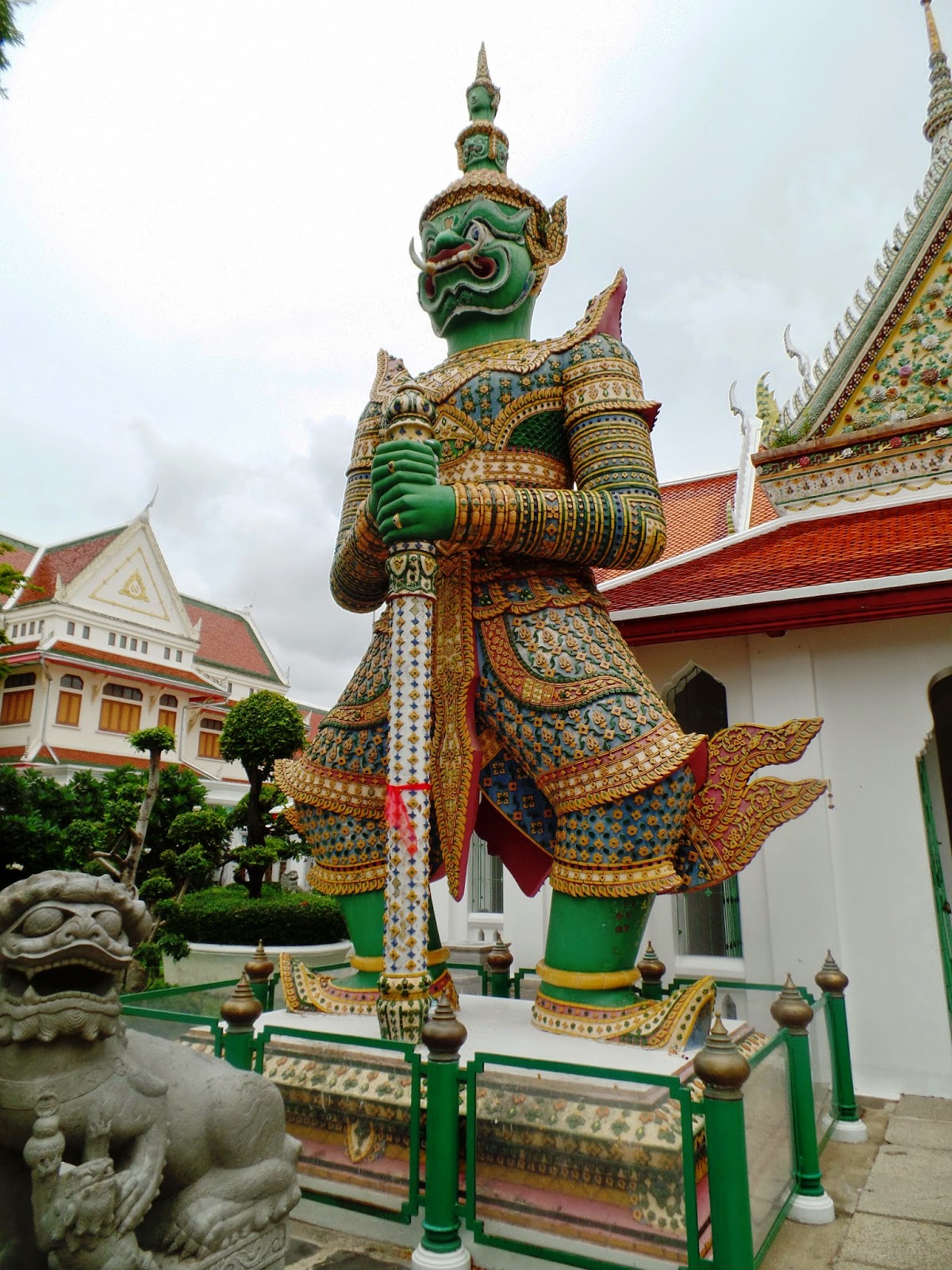Wat Arun Ratchawararam Ratchawaramahawihan or
Wat Arun (
Thai pronunciation: [wát ʔarun], "Temple of Dawn") is a
Buddhist temple (
wat) in
Bangkok Yai district of
Bangkok,
Thailand, on the
Thonburi west bank of the
Chao Phraya River. The temple derives its name from the
Hindu god
Aruna, often personified as the radiations of the rising sun. Wat Arun is among the best known of Thailand's landmarks and the first light of the morning reflects off the surface of the temple with pearly iridescence.
Although the temple had existed since at least the seventeenth century, its distinctive
prang (spires) were built in the early nineteenth century during the reign of King
Rama II.
The main feature of Wat Arun is its central
prang (
Khmer-style tower) which is encrusted with colourful porcelain.
This is interpreted as a stupa-like pagoda encrusted with coloured
faience.
The height is reported by different sources as between 66.8 m (219 ft) and 86 m (282 ft). The corners are surrounded by four smaller satellite
prang. The
prang are decorated by seashells and bits of porcelain which had previously been used as ballast by boats coming to Bangkok from China.
The presiding Buddha image, cast in the reign of Rama II, is said to have been moulded by the king himself. The ashes of King Rama II are interred in the base of the image.
Please single click on the photos to enlarge.
 |
| On our way to Wat Arun. |
|
 |
| Its a sight to see. |
|
|
|
 |
| These guys are doing a great job holding up the temple wall. Look at the porcelain chips. |
|
 |
| Its a looooooong way up. |
|
|
 |
| Inside the Wat is very beautiful. |
|
 |
| Guardians of the gate. |
|
|
 |
| Take a good look at her fingernails. |
|
 |
| You heard of the Ravens feeding Isaiah, well...... |
|


















































